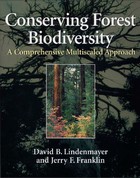
While most efforts at biodiversity conservation have focused primarily on protected areas and reserves, the unprotected lands surrounding those area—the "matrix"—are equally important to preserving global biodiversity and maintaining forest health. In Conserving Forest Biodiversity, leading forest scientists David B. Lindenmayer and Jerry F. Franklin argue that the conservation of forest biodiversity requires a comprehensive and multiscaled approach that includes both reserve and nonreserve areas. They lay the foundations for such a strategy, bringing together the latest scientific information on landscape ecology, forestry, conservation biology, and related disciplines as they examine:
- the importance of the matrix in key areas of ecology such as metapopulation dynamics, habitat fragmentation, and landscape connectivity
- general principles for matrix management
- using natural disturbance regimes to guide human disturbance
- landscape-level and stand-level elements of matrix management
- the role of adaptive management and monitoring
- social dimensions and tensions in implementing matrix-based forest management
Conserving Forest Biodiversity presents strategies for enhancing matrix management that can play a vital role in the development of more effective approaches to maintaining forest biodiversity. It examines the key issues and gives practical guidelines for sustained forest management, highlighting the critical role of the matrix for scientists, managers, decisionmakers, and other stakeholders involved in efforts to sustain biodiversity and ecosystem processes in forest landscapes.
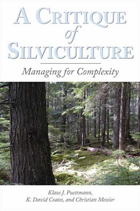
The book includes an overview of the historical developments of silvicultural techniques and describes how these developments are best understood in their contemporary philosophical, social, and ecological contexts. It also explains how the traditional strengths of silviculture are becoming limitations as society demands a varied set of benefits from forests and as we learn more about the importance of diversity on ecosystem functions and processes.
The authors go on to explain how other fields, specifically ecology and complexity science, have developed in attempts to understand the diversity of nature and the variability and heterogeneity of ecosystems. The authors suggest that ideas and approaches from these fields could offer a road map to a new philosophical and practical approach that endorses managing forests as complex adaptive systems.
A Critique of Silviculture bridges a gap between silviculture and ecology that has long hindered the adoption of new ideas. It breaks the mold of disciplinary thinking by directly linking new ideas and findings in ecology and complexity science to the field of silviculture. This is a critically important book that is essential reading for anyone involved with forest ecology, forestry, silviculture, or the management of forested ecosystems.
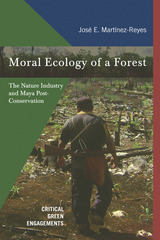
Moral Ecology of a Forest provides an ethnographic account of conservation politics, particularly the conflict between Western conservation and Mayan ontological ecology. The difficult interactions of the Maya of central Quintana Roo, Mexico, for example, or the Mayan communities of the Sain Ka’an Biosphere, demonstrate the clashing interests with Western biodiversity conservation initiatives. The conflicts within the forest of Quintana Roo represent the outcome of nature in this global era, where the forces of land grabbing, conservation promotion and organizations, and capitalism vie for control of forests and land.
Forests pose living questions. In addition to the ever-thrilling biology of interdependent species, forests raise questions in the sphere of political economy, and thus raise cultural and moral questions. The economic aspects focus on the power dynamics and ideological perspectives over who controls, uses, exploits, or preserves those life forms and landscapes. The cultural and moral issues focus on the symbolic meanings, forms of knowledge, and obligations that people of different backgrounds, ethnicities, and classes have constructed in relation to their lands. The Maya Forest of Quintana Roo is a historically disputed place in which these three questions come together.
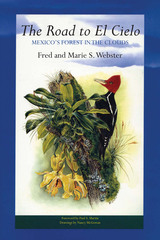
Hidden high in the Sierra de Guatemala mountain range of northeastern Mexico in the state of Tamaulipas is the northernmost tropical cloud forest of the Western Hemisphere. Within its humid oak-sweetgum woodlands, tropical and temperate species of plants and animals mingle in rare diversity, creating a mecca for birders and other naturalists.
Fred and Marie Webster first visited Rancho del Cielo, cloud forest home of Canadian immigrant Frank Harrison, in 1964, drawn by the opportunity to see such exotic birds as tinamous, trogons, motmots, and woodcreepers only 500 miles from their Austin, Texas, home. In this book, they recount their many adventures as researchers and tour leaders from their base at Rancho del Cielo, interweaving their reminiscences with a history of the region and of the struggle by friends from both sides of the border to have some 360,000 acres of the mountain declared an area protected from exploitation—El Cielo Biosphere Reserve. Their firsthand reporting, enlivened with vivid tales of the people, land, and birds of El Cielo, adds an engagingly personal chapter to the story of conservation in Mexico.
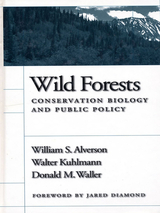
Wild Forests presents a coherent review of the scientific and policy issues surrounding biological diversity in the context of contemporary public forest management. The authors examine past and current practices of forest management and provide a comprehensive overview of known and suspected threats to diversity.
In addition to discussing general ecological principles, the authors evaluate specific approaches to forest management that have been proposed to ameliorate diversity losses. They present one such policy -- the Dominant Use Zoning Model incorporating an integrated network of "Diversity Maintenance Areas" -- and describe their attempts to persuade the U.S. Forest Service to adopt such a policy in Wisconsin.
Drawing on experience in the field, in negotiations, and in court, the authors analyze the ways in which federal agencies are coping with the mandates of conservation biology and suggest reforms that could better address these important issues. Throughout, they argue that wild or unengineered conditions are those that are most likely to foster a return to the species richness that we once enjoyed.
READERS
Browse our collection.
PUBLISHERS
See BiblioVault's publisher services.
STUDENT SERVICES
Files for college accessibility offices.
UChicago Accessibility Resources
home | accessibility | search | about | contact us
BiblioVault ® 2001 - 2024
The University of Chicago Press









